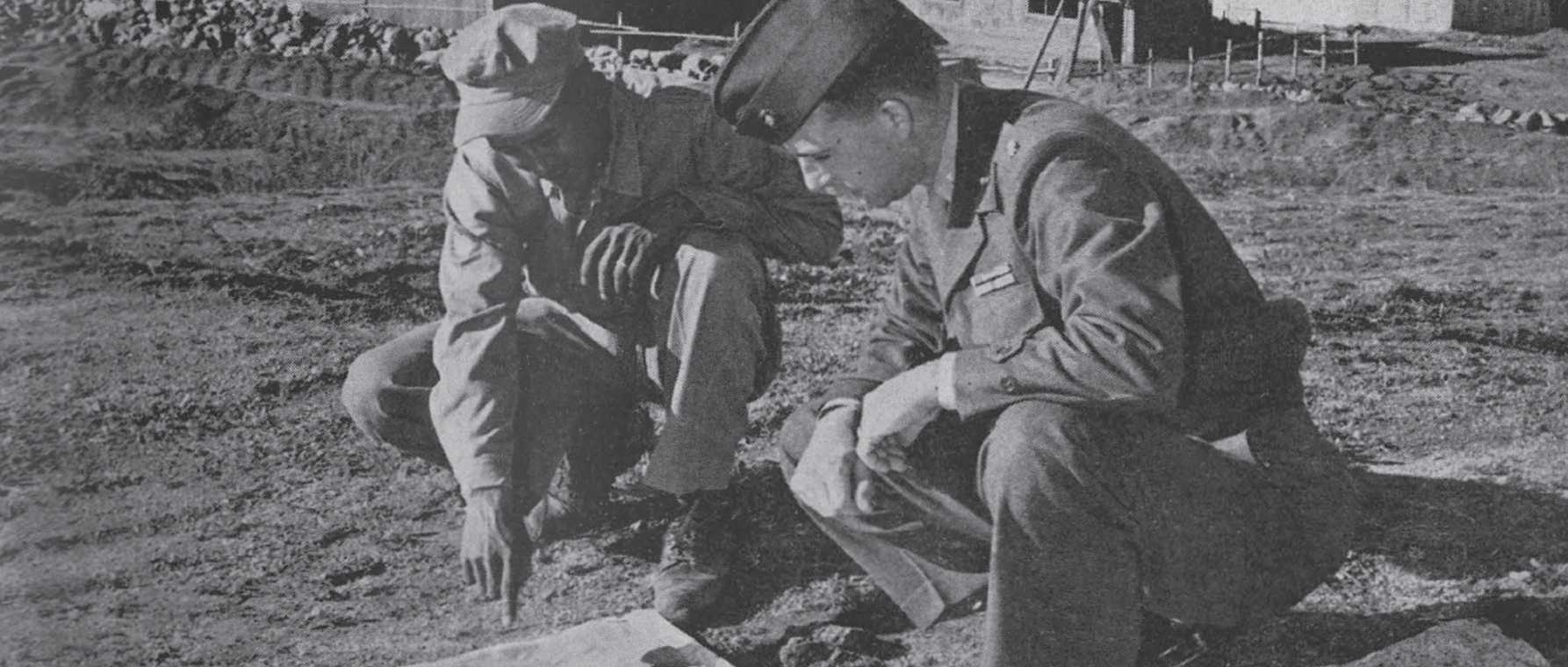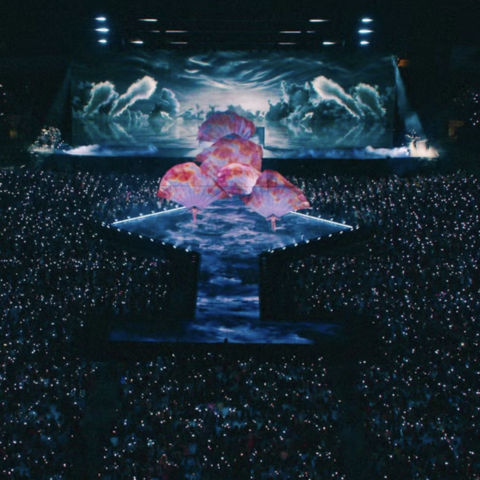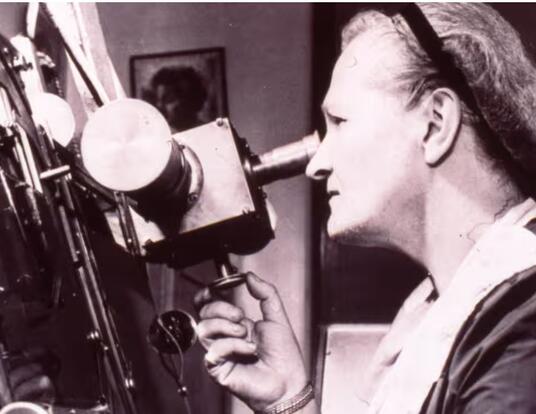Architects of War
Using the built environment to normalize military violence in civilian spaces

Research at Risk: Since World War II, universities have worked with the federal government to create an innovation ecosystem that has yielded life-changing progress. Now much of that work may be halted as funding is withdrawn. Find out more about the threats to medical, engineering, and scientific research, as well as how Harvard is fighting to preserve this work—and the University's core values.
In the years that followed the terrorist attacks of September 11, 2001, thousands of young men enlisted in the US military, were deployed to Afghanistan and Iraq, and became embroiled in conflicts that were often fought not on the battlefield but in rural villages and in cities. To prepare for that type of warfare, American troops often trained at bases in the southwestern United States, where the military constructed replicas of Afghan and Iraqi towns.
“The US military actually hired people of Arabic descent to populate these cities and simulate the experience of being immersed in a townscape full of civilians,” says Adam Longenbach, a PhD student in architecture, landscape architecture, and urban planning at Harvard’s Graduate School of Arts and Sciences (GSAS). “They had them working in markets, driving their cars, simulating everyday lives. And some of them also played the parts of insurgents and terrorists.”
The normalization of military violence in civilian spaces—and the role that architecture plays in that process—is the focus of Adam Longenbach’s 2023 Harvard Horizons project, “Stagecraft/Warcraft: The Rise of the Military Mock Village in the American West, 1942–1953.” In it, Longenbach traces the trend back to its beginnings in World War II to show how the built environment, augmented by Hollywood stagecraft, has been used to turn city streets and urban neighborhoods into battle zones.
Stagecraft as Warcraft
Collaborations between architects and the military have a long history according to Longenbach’s doctoral advisor Antoine Picon, the G. Ware Travelstead Professor of the History of Architecture and Technology at the Harvard Graduate School of Design. “The ancient Roman architect Vitruvius wrote extensively about architecture and the weapons that could destroy it,” he says. “In The Art of War, the Chinese military strategist Sun Tzu stressed the importance of analyzing enemy cities and landscapes to overtake them.”
Picon says Longenbach’s work captures the shift to the use of mock towns as “laboratories of war,” where military operations were repeatedly tested and refined before being deployed. “Adam’s research reveals the critical moment when architecture itself became a weapon.”
Longenbach’s Horizons project begins with the year 1942. At that time, he says, there were four distinct ways that the US military appropriated buildings and cities for wartime purposes: for deception and camouflage, for public propaganda, for military-scientific study, and for the physical and psychological conditioning of troops. In his research, Longenbach investigates how the military enlisted the expertise of architects, engineers, landscape architects, and Hollywood scenographers to design and construct the mock villages that fulfilled each of these functions.
“If you’re an architect or engineer who knows how certain buildings or cities are made, then it stands to reason that you also know how they can be unmade,” Longenbach says. “It was a case of construction begetting destruction.”
In 1943, the US military took this thinking to the next level—a story first told by the architectural historian Enriquez Ramirez. To learn how to use its newest weapon, napalm, to its most devastating effect, the army decided to build model German and Japanese villages—accurate to the last detail—and destroy them.
To design the Japanese village, the military called in Antonin Raymond, a Czech-American architect who had lived and worked extensively in the Asian nation. When the bombing runs took place at Utah’s Dugway Proving Grounds, napalm caused uncontrollable fires in nearly 70 percent of the Japanese structures, which were built mostly of wood and straw mats. As a result of the test, the army launched a firebombing campaign that leveled nearly 70 Japanese cities, including Tokyo, where between 80,000 and 130,000 people were incinerated—probably the deadliest single air raid in human history.
“We're seeing with the 1943 tests in the American West the beginnings of a kind of normalization of violence against domestic spaces,” says Longenbach. “Not that these things weren't already happening during the First World War or even the Spanish Civil War, but they really came into their own during the early years of the Second World War.”
The military and their architects were aided in their efforts by some of Hollywood’s most talented scenographers—experts at designing sets for films. At Dugway, for instance, the Standard Oil Development Company, which was involved in the production of napalm, hired RKO Studios, which had just finished the film Hitler’s Children, to help with the project. RKO’s designers reconstructed the furnishings, furniture, and wall coverings that were found in German homes in preparation for bombings like the one in Dresden that killed between 25,000 and 35,000 people, mostly civilians.
If you’re an architect or engineer who knows how certain buildings or cities are made, then it stands to reason that you also know how they can be unmade.
–Adam Longenbach
“These villages arose at the intersection of bureaucracies of military strategy and the visual worlds of Hollywood or world's fairs,” says David Joselit, Arthur Kingsley Porter Professor of Art, Film, and Visual Studies, and another of Longenbach’s faculty advisors. “They were often constructed with the collaboration of filmmakers and sometimes their destruction was filmed and the footage used in actual movies like the 1943 film Bombardier. What this and the other cases in Adam's research demonstrate is that visual authentication, even when simulated, was essential to American war strategy.”
Cities through Military Eyes
In the decades following World War II, the US dropped hundreds of thousands of tons of napalm in Korea and, especially, Vietnam, killing hundreds of thousands of civilians. (In 1980, the United Nations Convention on Prohibitions or Restrictions on the Use of Certain Conventional Weapons, banned the use of napalm against civilian populations.) But the use of mock villages extended well beyond simulations for more effective air raids. During the Korean War in the early 1950s, the Army Corps of Engineers, again with assistance from Hollywood scenographers, painstakingly constructed sets where actors actually cooked kimchi, a traditional Korean side dish of fermented vegetables, to acclimate soldiers to civilian settings. The training methods were also used in the 1960s during the conflict in Vietnam when, Longenbach says, the war came home.
The fact that mock villages have spilled over from the military to become a police technology only substantiates this gradual increase in the militarization of everyday urban life.
–Antoine Picon
“With the protests against US involvement in Vietnam and the so-called ‘race riots’ of the 1960s, the military collaborated with police departments,” he says. “Law enforcement starts to construct its own mock villages to practice anti-riot operations. The idea that the built environment can be weaponized to combat civil unrest becomes normal.”
Today, the use of mock villages for the training of soldiers and police is widespread, according to Longenbach. Like their American cousins, British law enforcement in the second half of the 20th century created model towns for better quelling civil disorder. In addition to preparing troops for Iraq and Afghanistan, the US collaborated with Israel to construct a mock Palestinian village, Baladia City, where soldiers from both countries could train together. (The site is still in use today.) Satellite imagery suggests that China is constructing replicas of US military bases, warships, aircraft, and more. Longenbach’s advisor Picon says these sites continue to be a portrait of cities as seen through military eyes.
“From the 1940s to today, whether they’re used for militaristic or policing purposes, mock villages enable the production and execution of violence in urban areas—the kinds of places where innocent people go about their everyday lives,” he says. “The fact that mock villages have spilled over from the military to become a police technology only substantiates this gradual increase in the militarization of everyday urban life.”
What’s striking about Longenbach’s research, Picon says, is that it reveals how little the military has evolved since the 1940s.
“Despite advances in digital technologies and virtual reality, militaries, police departments, and weapons manufacturers continue to rely on these vast physical spaces for simulation,” he says. “Mock villages today occupy areas of many square kilometers. And yet, despite their tremendous size, they have largely remained out of the public eye for over half a century. Adam’s research illuminates these otherwise hidden sites, showing the very spaces in which violence among and against civilians is practiced and normalized.”
Longenbach’s hope for his research—and his Harvard Horizons project—is to draw attention to those hidden spaces and the way scholars think about the built environments there.
“At this early stage of my project, what I hope to show is how, in the 1940s, mock villages demanded novel ways of seeing, using, and constructing architecture that coincided with the production of new forms of violence and destruction,” he says. “But, as we’re seeing today, what began as a US military technology has since become a global instrument of war and policing. At stake in the research, then, is a broader understanding of how any form of architecture risks being replicated for the purpose of enacting violence in and against it.”
Portrait by David Salafia
Get the Latest Updates
Join Our Newsletter
Subscribe to Colloquy Podcast
Simplecast





